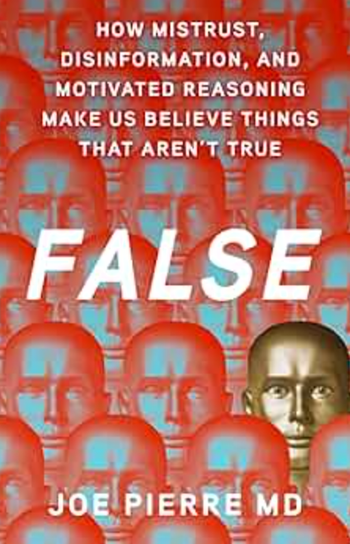
- Vol 32 No 9
- Volume 32
- Issue 9
Psychopharmacology: A Concise Overview for Students and Clinicians, 2nd Edition
Ronald Pies, MD reviews the second edition of Ansari and Osser’s overview of psychopharmacology.
Book Review
by Arash Ansari, MD and David N. Osser, MD;
North Charleston, SC: CreateSpace Independent Publishing Platform; 2015
234 pages • $24 (paperback)
Reviewed by Ronald W. Pies, MD
The second edition of Ansari and Osser’s overview of psychopharmacology might well be subtitled, Sic et Non (after philosopher Peter Abelard’s classic work) or, perhaps, On the Other Hand. Throughout the book, there is a “point/counterpoint” approach to the material-and let me say at once that this is a very good thing in psychopharmacology, where dogmatic statements and bumper sticker recommendations are all too common.
The Ansari-Osser text, in contrast, is a model of nuanced, balanced, and qualified information. Those of us who have known Dr Osser as a colleague will not be surprised by the judicious tone and content of this text, or by its independence from “Big Pharma” influence. (The back cover of the book notes that neither author has “. . . any affiliations with the pharmaceutical industry.”)
The book is geared primarily toward medical students and beginning clinicians and, as such, does not claim to be a detailed handbook for the administration of psychotropic medications. It is sensibly organized in 6 main sections: antidepressants, anxiolytics, antipsychotics, mood stabilizers, stimulants/ADHD medications, and treatments for substance use disorders. Brief introductory material on mechanism of action is provided for the major drug groups, followed by a more detailed discussion of particular types of agents (SSRIs, SNRIs, etc). Notably, a good deal of attention is paid to the supporting research and its (many) limitations, with the emphasis rightly placed on randomized, placebo-controlled, double-blind studies.
Controversial areas, such as the use of antidepressants in bipolar disorder and the long-term use of benzodiazepines, are handled with the book’s trademark balance, in which one point is almost always balanced by a dissenting view. An example: “On the one hand, medications such as benzodiazepines . . . can have a relatively immediate effect on distressing anxiety symptoms. On the other hand, the use of such medications carries the risk of cognitive impairment, physical dependence, rebound exacerbations . . . and other disadvantages” (page 33). Nonetheless, the authors are clear in their recommendations to beginning clinicians, for example, “. . . efforts should be made to limit benzodiazepines to short-term use whenever possible” (page 43).
The references are well chosen and up-to-date, and they make up nearly 60 pages of text-consistent with the authors’ inclination to scrutinize the evidence carefully. Numerous helpful tables are included throughout the book, allowing the reader to gain quick access to basic dosing information, pharmacokinetic issues, and the authors’ judgments on drugs of first choice. The text is clearly written and virtually jargon-free. Overall, I believe the Ansari-Osser text is well-suited to the needs of medical students, early-career clinicians, and other mental health professionals who desire a concise but constructively critical overview of psychopharmacology.
Articles in this issue
about 10 years ago
A Review of Changes in DSM-5 Sleep-Wake Disordersabout 10 years ago
Sleep-Related Violenceabout 10 years ago
Parasomnias: What Psychiatrists Need to Knowabout 10 years ago
The Correlation Between Sleep Disturbance and Suicideabout 10 years ago
Sleep Disturbances After Traumatic Brain Injuryabout 10 years ago
Koryagin, Suspicious of Glasnost, Recounts Ongoing Soviet Abusesabout 10 years ago
PTSD in DSM-5: Understanding the Changesabout 10 years ago
Weight Loss Associated With Cholinesterase Inhibitors in the ElderlyNewsletter
Receive trusted psychiatric news, expert analysis, and clinical insights — subscribe today to support your practice and your patients.














